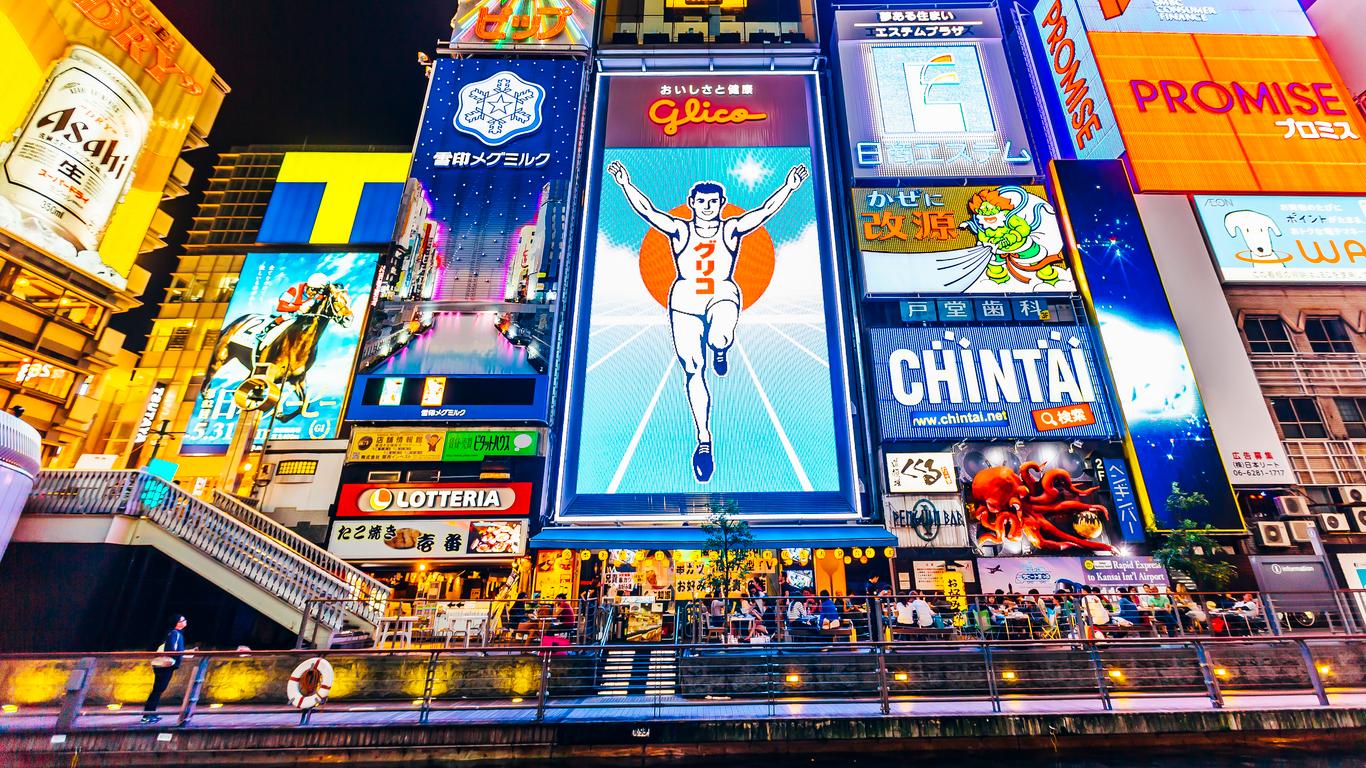With its atmospheric historic theatre district and high density of restaurants, Dōtonbori is Osaka’s premier tourist destination. It runs along the Dōtonbori canal between the Dōtonboribashi and Nipponbashi bridges, with its famed Glico Man illuminated billboard and neon lights reflecting in the surrounding waters.
Despite the modern edge Dōtonbori boasts today, there are glimpses of the past in the 17th century Hozen-ji Temple, fronted by the stone paving of Hozen-ji Yokocho Lane and flanked by Edo Period-influenced architecture in the surrounding shopfronts. For many visitors to Osaka, however, Dōtonbori is primarily a place to eat with some of the city’s most iconic restaurants doing their best to attract visitors attention. The KaniDōraku crab restaurant is one of the most renowned, with a six and a half metre mechanised crab out the front which dates to 1960, as are the three Kinryu Ramen restaurants, noted for their 3D golden dragon billboards. The Japanese phrase “to ruin oneself by extravagance in food”, or Kuidaore, is a motto for Dōtonbori, and the mechanical drum-playing clown known as Kuidaore Ningyo has been entertaining visitors to the area since 1950 as a vivid reminder.
The Dōtonbori area is located just a five-minute walk from Osaka’s Namba Station, which connects to Shin-Osaka Station where trains to both Tokyo and Nagoya can be found. The best way to explore the area is definitely on foot, wandering down its billboard-lit streets and across its iconic canal bridges.
Dōtonbori’s history stretches all the way back to the early 17th century when the Umezu River was first developed into a canal by local entrepreneur Yasui Dōton in an attempt to increase the district’s commerce. Although he died during the Siege of Osaka, the canal and adjacent avenue were named in his honour, and Kabuki, Bunraku and puppet theatres transformed it into a popular entertainment district. These traditional forms of theatre gradually saw a decline in patronage and by the time bombing destroyed large areas of Dōtonbori during World War II, many had already closed their doors.





